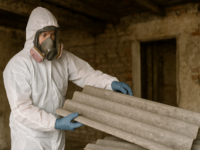The following post is from another author.
When configuring a smart home, it’s tempting to spend most of your time on smart devices themselves. With new releases seemingly every day and additional functionality constantly being added, a focus on exploring the options available is entirely natural.
However, as wonderful and exciting as the device options available may be, a good smart home is one that goes above and beyond those considerations. In order to make the most of those great devices, and protect your investment in them, you also need to ensure that you make a little time to explore the following areas too…
#1 – Sufficient home insurance coverage
Home insurance is important for any homeowner, but requires extra consideration for those who have invested in creating a smart home. Smart devices tend to be expensive, thus you will need to ensure that the money you have spent on these items is protected via your potential insurance payout. In fairness, most standard policies will provide enough coverage for this, but if you have spent particularly large sums, it’s always worth calling your provider to find out how much your policy actually entitles you to in the event of an accident.
As well as the overall total amount you could stand to receive, it’s also beneficial to check what is covered – and particularly, whether your devices are covered for accidental damage. Accidental damage is a useful addition to any insurance policy, especially in the case of complex smart devices that may require expensive repairs.
Finally, if you decide to upgrade or buy a new home insurance policy as a result of the investigations above, it’s important to check the policy wording carefully. There are often a number of exclusions that render your insurance effectively void. If you live in a flood-prone area, then there’s always the possibility that your coverage is limited for flood damage; this could mean that, in the event of a flood, you find yourself juggling calls to your insurer, scanning a blog for flood management tips, finding the funds to pay for a specialist company from your own money, and try and protect your smart home devices- all at the same time. Similar exclusions or payout limitations apply for homes that are close to the ocean or have known structural defects, so it’s definitely worth making a note of any particular exclusions that apply to your policy.
#2 – Good internet service
A smart home cannot be smart without internet access, so it’s first worth finding out when your current deal expires and diarizing an intent to compare different providers when the time comes.
When looking for a new deal, there are two particularly important areas smart home owners need to be particularly aware of: reliability and cost. Look for providers who have a reputation for providing quick remedies in the event any issues develop, and it may be a good investment to pay more for a dedicated care plan. Cost is, of course, also important, but be cautious of making cost the sole priority – if you’ve invested in smart home devices, you need good service to ensure that expense was worth it, even if it does mean paying a little more.
It’s also important to note that the type of router you are supplied with by any new company may impact your smart home devices. Routers can use two different frequency bands, and some smart home devices are only compatible with a specific band, so you’ll need to check that your new router matches up with the requirements of your existing devices.
#3 – Affordable mobile data
While reliable internet service is a must for those with a smart home, service interruption is a persistent threat – and even if you have paid to ensure quick rectification of any issues, you can still face a day or more without internet access at home.
As a result, it’s helpful to have backup cellphone data that you can use in the event of a home internet outage. While you would still want to limit your usage in such a scenario, a generous data plan can help to ensure you’ll always have access to the devices you need most. Relatively inexpensive access to mobile data is particularly important if you have a smart thermostat, especially with winter approaching.
#4 – Electricity considerations
First and foremost, it’s worth comparing your electricity rates to ensure you are paying the lowest possible price for your utilities. Smart devices tend to actually help lower electricity consumption, but it’s still helpful to ensure you’re on the best available plan for your usage.
The second electricity consideration is surge protection. Power surges can cause huge problems for any household, but smart homes – which have multiple expensive devices plugged into the mains – are particularly vulnerable. If you use extension cords for devices, make sure they have surge protection capabilities, as this can help to limit the risk of an electrical power surge damaging sensitive equipment. If you feel like you need additional surge protection, you could contact a local electrician who is able to come out and sort out whole house surge protection in Prescott, or wherever you live, for you so that you can use all your devices confidently and safely.
#5 – Backup plans
Finally, even with all of the precautions as detailed above, there may be a time when your smart home functionality is offline and inaccessible. A bad storm that knocks out the power grid, for example, cannot be prevented, and can have huge consequences for the way your home functions.
One backup option to protect against this scenario is to buy an electricity generator, but these can be expensive (read more), and not always sufficient to power an entire smart home system. As a result, it’s usually best to focus your backup plans on ensuring you retrieve important information from your devices while they are online; always keep hold of remote controls; and set your reminders and calendar on paper as well as on a screen. These precautions should ensure that if you do lose access to your smart home system, it’s inconvenient rather than potentially catastrophic to the way you live your life.
In conclusion
If you ensure you explore the options available to you in regards to the areas above, then your smart home will always be able to function to the very best of its abilities. Enjoy!

















Pingback: Stylish Smart Home Technology & How To Style It - Interior design Ideas, wall art ideas